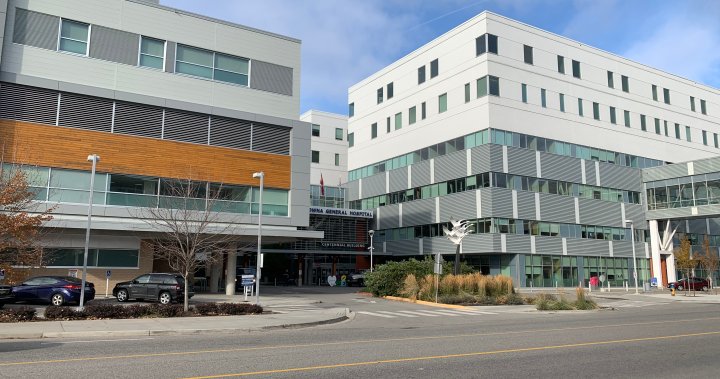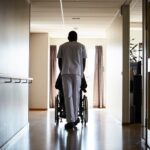As I reviewed the documents obtained through freedom of information requests last week, one figure stood out starkly: Interior Health’s top executives saw their performance-based pay increase by nearly 30% last year—the same year many Kelowna residents struggled to find a family doctor.
The health authority’s CEO, Susan Brown, received $84,729 in performance pay for the 2023-24 fiscal year, up from $65,203 the previous year. The total compensation for Interior Health’s executive team climbed to $3.4 million, according to records reviewed by Mediawall.news.
This comes as Kelowna continues to grapple with one of British Columbia’s most severe healthcare accessibility crises. An estimated 40,000 residents in the region currently lack access to a family physician, according to the Kelowna Division of Family Practice.
Dr. Toye Oyelese, a Kelowna surgeon who’s been vocal about healthcare management issues, expressed frustration about the compensation increases. “It’s difficult to reconcile executive bonuses with what we’re seeing on the ground,” he told me during a conversation at Kelowna General Hospital. “We have patients waiting months for urgent procedures, and physicians burning out from unsustainable workloads.”
The performance-based payments, which health authorities call “holdbacks,” represent a portion of executive salaries withheld until certain performance targets are met. The Interior Health board determines these metrics annually, evaluating factors like operational efficiency and patient outcomes.
When asked about the increases, Interior Health spokesperson Emily Johnston defended the compensation structure. “Executive holdbacks are aligned with provincial frameworks and reflect progress on strategic priorities including pandemic recovery and healthcare transformation,” Johnston said via email.
But for Kelowna residents like Michelle Danyluk, these explanations offer little comfort. Danyluk has searched for a family doctor for nearly two years. “I manage three chronic conditions with no consistent care,” she explained during a community healthcare forum last month. “Meanwhile, those running the system reward themselves for what exactly? The system isn’t working for patients.”
The timing of these increases raises questions about priorities within BC’s healthcare system. Provincial Health Minister Adrian Dix has repeatedly highlighted investments in primary care networks and the addition of 38 new medical residency positions announced in February. However, these initiatives have yet to substantially improve access in the Interior region.
Dr. Josh Greggain, president of Doctors of BC, noted that executive compensation structures need better alignment with frontline realities. “When we talk about performance metrics, we should ask whether patients feel they’re receiving timely, quality care,” Greggain said during a recent BC healthcare policy summit. “That’s the ultimate measure of whether our system is succeeding.”
The pay increases also arrive amid ongoing contract negotiations between the province and physicians. Many doctors have pointed to administrative bureaucracy as a key obstacle to delivering care effectively.
Interior Health operates across BC’s southern interior, serving approximately 801,000 residents and managing 22 hospitals with an annual budget of $2.7 billion. According to Statistics Canada, the region has 0.85 family physicians per 1,000 residents, well below the national average of 1.2.
Dr. Oyelese believes the system requires fundamental restructuring. “We don’t need more administrators making more money. We need to redistribute resources to frontline care,” he said. “Every dollar spent on administrative bonuses could fund direct patient services.”
In Kelowna’s Rutland neighborhood, the strain is particularly evident. The area lost three family practices in the past year alone, leaving thousands scrambling for care. Many have turned to walk-in clinics, which often have multi-hour waits and don’t provide the continuity needed for complex conditions.
Provincial opposition health critic Shirley Bond called the executive compensation increases “tone-deaf” during a time of healthcare strain. “British Columbians expect health dollars to translate into better care, not better executive packages,” Bond said in a statement released Tuesday.
Interior Health Board Chair Doug Cochrane defended the executive team’s performance in a written statement, citing progress on surgical recovery and mental health initiatives. However, when pressed about specific metrics justifying the 30% increase in performance pay, Cochrane did not provide details.
For perspective, the average family physician in BC earns approximately $250,000 before overhead costs, which typically consume 30-40% of gross income. Many Kelowna physicians report working 60-70 hour weeks while struggling with administrative burdens.
Community advocate Janet Fleming, who founded the Kelowna Healthcare Access Network last year, questions whether the executive compensation structure truly incentivizes solving the doctor shortage. “If we tied executive bonuses directly to reducing the number of residents without a family doctor, I wonder if we’d see different priorities,” Fleming remarked during a phone interview.
What remains clear is the disconnect between administrative rewards and patient experiences. As fall approaches, Kelowna’s urgent care centres continue to post multi-hour wait times, and hospital occupancy rates hover consistently above 100%.
The question many Kelowna residents are asking isn’t whether executives deserve performance pay, but rather how performance is being measured in a system where thousands still lack basic healthcare access.
Perhaps the answer lies in reimagining success metrics altogether—shifting from administrative efficiencies to patient outcomes. Until then, the gap between executive compensation and frontline healthcare delivery will continue to raise difficult questions about our healthcare priorities.






